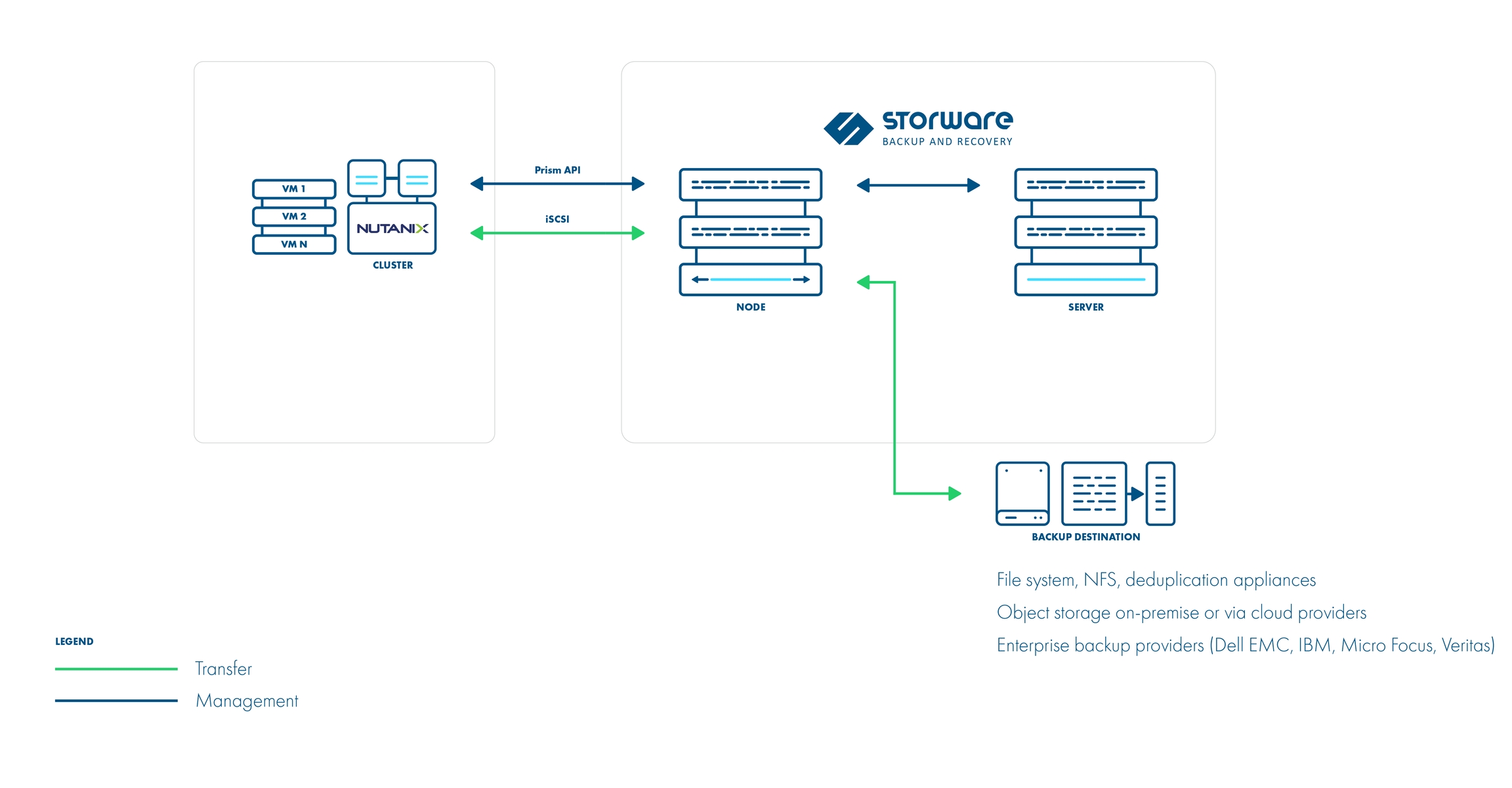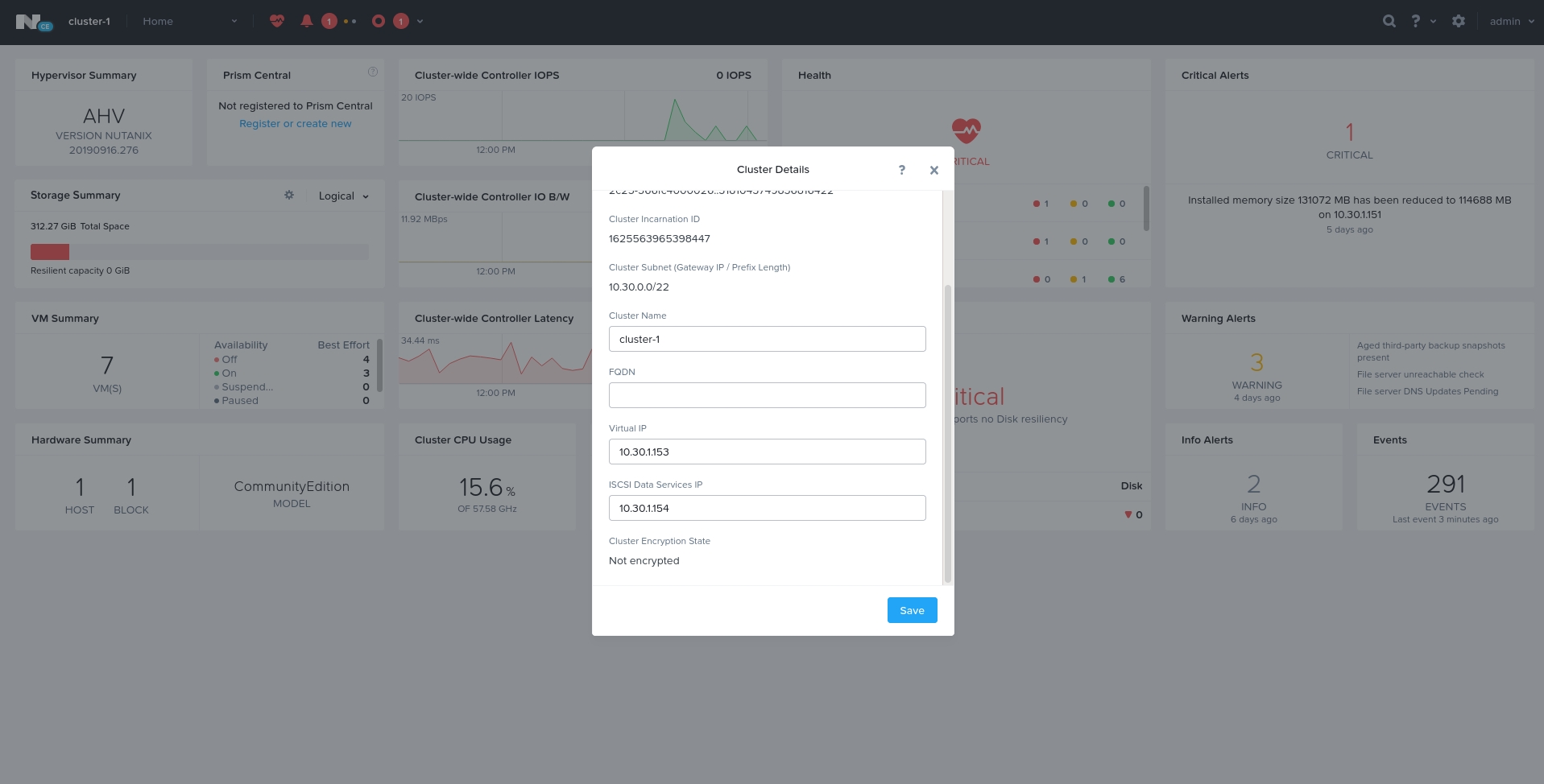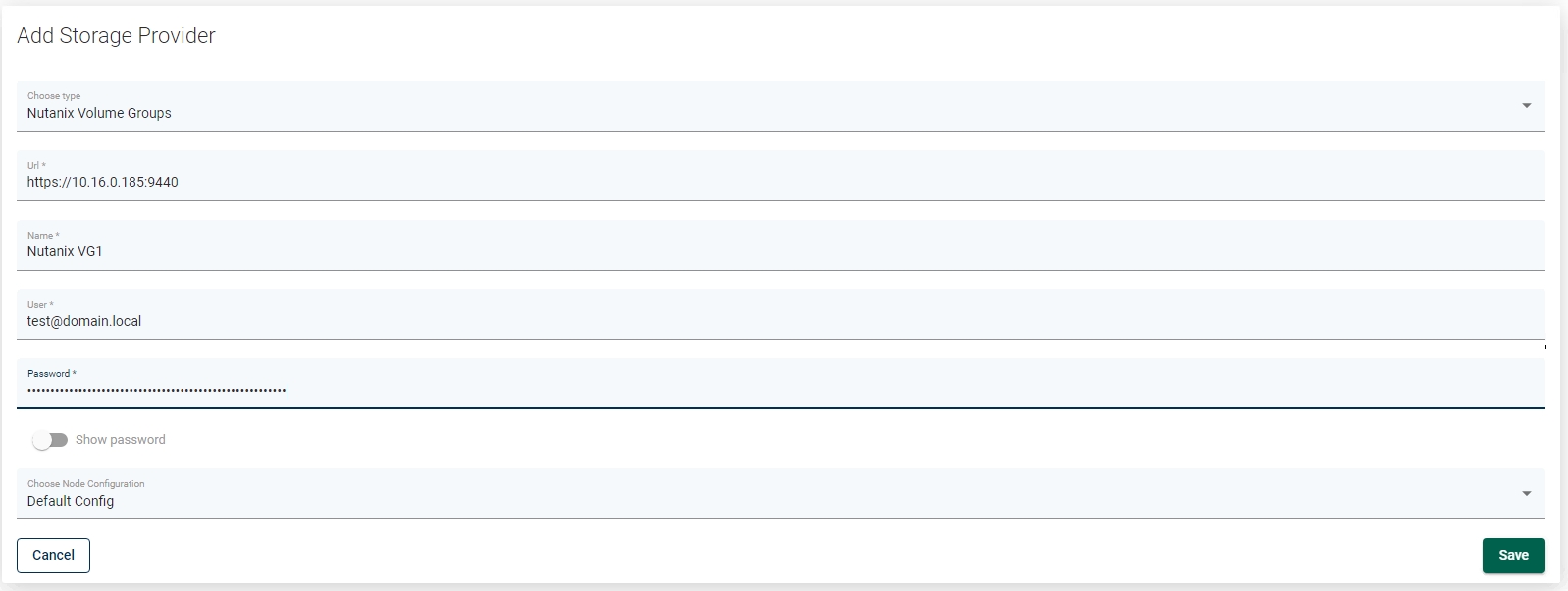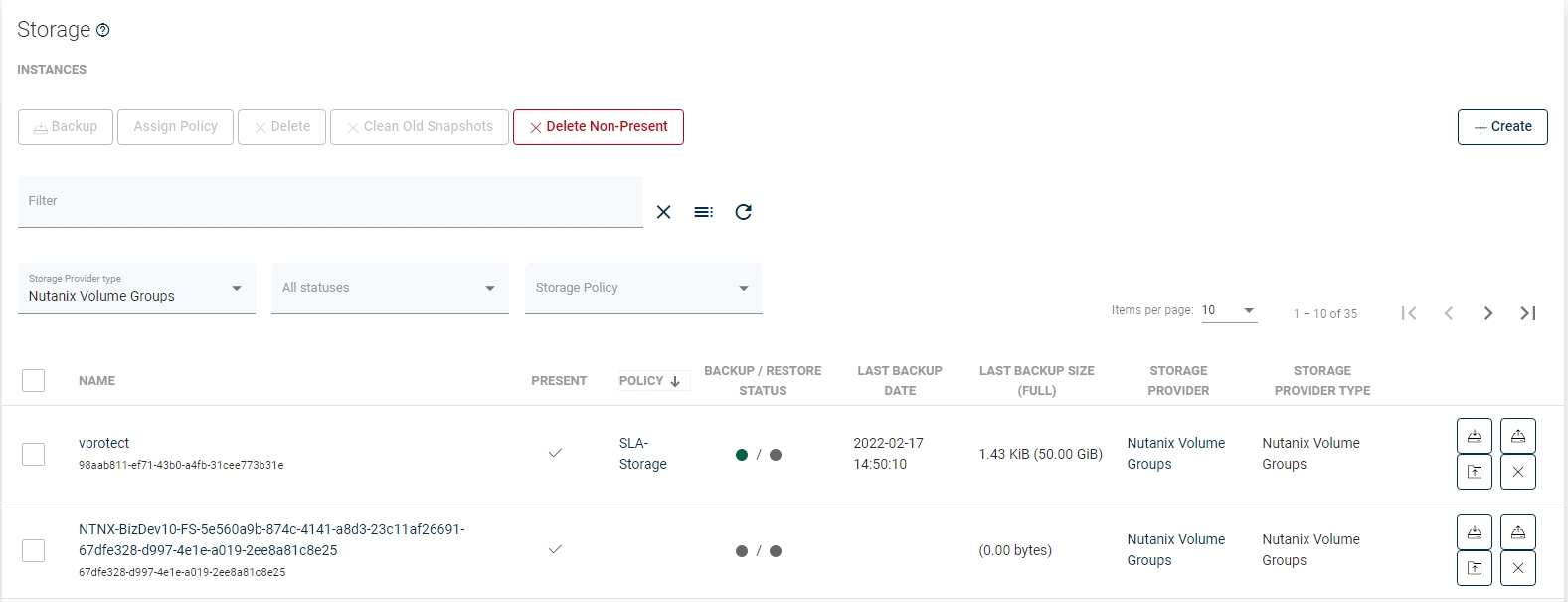Nutanix Volume Groups
General
Storware Backup & Recovery supports volume groups for the Nutanix platform. Disk snapshots are being attached to the host with Storware Backup & Recovery Node using iSCSI. Thanks to this backups and restores can be performed remotely without Proxy VM.
This storage provider also allows excluding disks for backups.

In general, the export process looks as follows:
A Snapshot of the volume group is taken
A Temporary volume group with disk snapshots is created
Disks from the temporary volume group are attached to Storware Backup & Recovery Node host using iSCSI
Disks content is exported to RAW files
Disks are then detached and temporary volume group is deleted
In general, the restore process looks as follows:
A new volume group is created with yet empty disks
Disks from a new volume group are attached to Storware Backup & Recovery Node host using iSCSI
Content from RAW files of backup is imported to attached disks
Disks are detached from Storware Backup & Recovery Node host

Example
Complete the following steps to add the Nutanix Volume Groups storage provider:
Go to Storage -> Infrastructure and add click on Create
In the form provide:
Nutanix Volume Groupsas a typeURL to Prism Element Host (
https://PRISM_ELEMENT:9440)Name of the storage provider
Login and password
The node configuration responsible for backup operations

Click Save - now you can run inventory synchronization to detect volume groups - they will be visible in Storage -> Instances view

Now you can create a backup task for the chosen volume group.